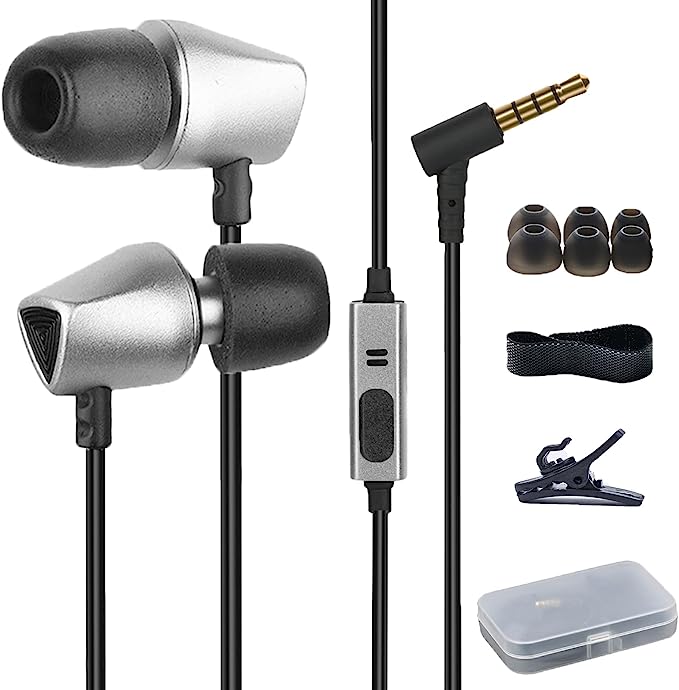We’ve all been there. You’re deep into a podcast, hitting your stride on a run, or simply walking down a busy street, and then you feel it: that dreaded, slow-motion loosening. A moment later, your audio world is lopsided as one earbud dangles uselessly or, worse, clatters to the pavement. This near-universal frustration begs a simple question: in an era of hyper-advanced technology, why is getting a tiny piece of plastic to stay comfortably in our ears so incredibly difficult? The answer lies not in the earbud alone, but in a fascinating intersection of human anatomy, material science, and the fundamental physics of sound.

The first inconvenient truth of personal audio is a concept engineers know as “one size fits none.” Our ears, specifically the outer ear (pinna) and the ear canal (external auditory meatus), are as unique as our fingerprints. Anthropometric studies reveal vast variations in the size, shape, and angle of human ear canals, a fact that makes universal design a profound challenge. So when a product, such as the ZXQ A5, features an “ergonomic 45-degree angle,” it’s not a magic number. It’s a carefully calculated compromise, an educated guess based on population averages to design a nozzle that follows the natural curve of most ear canals. For many, this works beautifully. But for those on the outer edges of the anatomical bell curve, it can be the first point of failure in the quest for a secure fit.
But even the most clever ergonomic angle can’t overcome the final, crucial point of contact: the eartip itself. This is where the cold, hard geometry of the earbud meets the soft, pliable reality of your ear, and where material science becomes the ultimate arbiter of comfort and fit. Most earbuds arrive with an assortment of standard silicone tips. Silicone is an excellent choice for its durability, ease of cleaning, and hypoallergenic properties. It creates a seal through its elasticity, flexing to fill the space. However, for some, its smooth surface and firm pressure can lead to slippage or discomfort over extended periods.
This is where the second primary material, memory foam, enters the stage. Originally developed by NASA for aircraft cushion safety, viscoelastic polyurethane foam has a remarkable property. As it warms to your body temperature, it passes its “glass transition temperature,” transforming from a relatively firm state to a significantly softer, more malleable one. When you compress a memory foam tip and insert it into your ear, it slowly expands, conforming perfectly to every unique nook and cranny of your ear canal. This creates a gentle, low-pressure, yet incredibly secure seal that is far more customized than silicone can ever be. The inclusion of both tip types with many modern earbuds is an implicit acknowledgment of this material science showdown, inviting users to discover which technology best suits their individual anatomy.
Achieving that perfect, comfortable seal does more than just keep the earbud in place. It erects a physical barrier, a miniature fortress wall at the entrance of your ear canal. This wall is your first and most powerful defense against the intrusion of the outside world, a principle known as passive noise isolation. Sound is a physical wave of pressure; to stop it, you need a physical blockade. A well-fitted memory foam tip, due to its dense and conforming nature, can provide 20 to 30 decibels (dB) of noise reduction in the crucial mid-to-high frequency range, where human speech and office chatter reside. This is often more effective for these types of sounds than the electronic wizardry of Active Noise Cancellation (ANC). Furthermore, a proper seal is essential for good bass response. Without it, the low-frequency sound waves produced by the driver simply leak out into the open air, resulting in a thin, tinny sound devoid of impact.
To demystify this process and empower you to find your own perfect fit, here is a practical, actionable guide.

Actionable Asset: Your 3-Step Checklist for Achieving the Perfect Fit
- The Size Test: Begin with the medium-sized tip of your chosen material (silicone or foam). It should feel snug, filling the ear canal without causing sharp pain or pressure. If it feels loose, go up a size. If it’s uncomfortable, go down a size. Don’t be afraid to use a different size in each ear—asymmetry is common.
- The Seal Check: With music playing, insert the earbud. The sonic character should change immediately and dramatically. The bass should become noticeably richer and more present, and outside ambient noises should become significantly muffled. If this transformation doesn’t happen, the seal is incomplete. Try a larger tip, a different material, or re-inserting.
- The “Lift and Lock” Technique: For a deeper, more secure fit, use your opposite hand to gently pull the top of your ear up and back. This motion temporarily straightens the ear canal, allowing for easier and deeper insertion. Insert the earbud while holding this position, then release your ear. It should settle into a comfortable, locked-in position.
In the end, achieving the perfect earbud fit is a dialogue between you and your device. It requires understanding the unique landscape of your own anatomy and a willingness to experiment with the materials science the manufacturer has provided. By taking a few moments to actively pursue that perfect seal, you don’t just prevent a falling earbud—you unlock a world of superior comfort, powerful noise isolation, and a sound quality you might not have known your device was capable of delivering.




